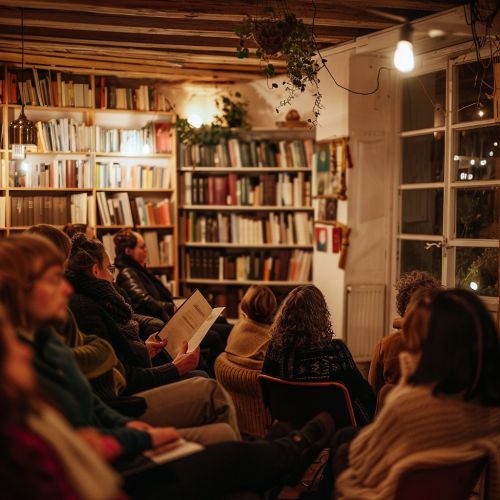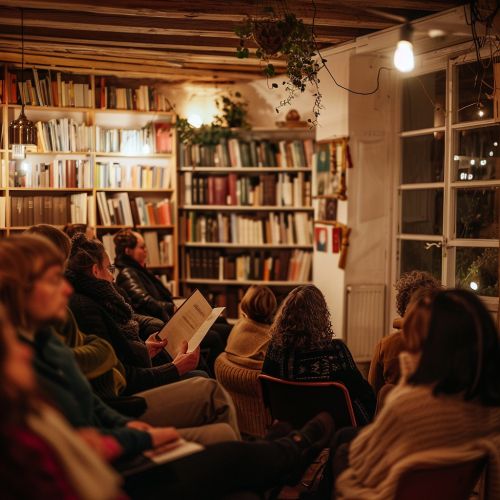Rhythm in Poetry
Rhythm in Poetry
Rhythm in poetry refers to the patterned recurrence of specific sounds or syllables, creating a musical quality in the verse. It is a fundamental element that distinguishes poetry from prose and enhances the aesthetic experience of reading or listening to a poem. This article delves into the various aspects of rhythm in poetry, exploring its components, types, and significance.


Components of Rhythm
Rhythm in poetry is created through the interplay of several elements, including meter, foot, and cadence. Each of these components contributes to the overall musicality and flow of the poem.
Meter
Meter is the structured pattern of stressed and unstressed syllables in a line of poetry. It provides the basic rhythmic structure and is often categorized into different types based on the number of syllables and the arrangement of stresses. Common types of meter include:
- **Iambic Meter**: Consists of an unstressed syllable followed by a stressed syllable (e.g., "da-DUM").
- **Trochaic Meter**: Consists of a stressed syllable followed by an unstressed syllable (e.g., "DA-dum").
- **Anapestic Meter**: Consists of two unstressed syllables followed by a stressed syllable (e.g., "da-da-DUM").
- **Dactylic Meter**: Consists of a stressed syllable followed by two unstressed syllables (e.g., "DA-da-dum").
Foot
A foot is the basic unit of meter, consisting of a combination of stressed and unstressed syllables. The type and number of feet in a line determine the meter of the poem. For example, a line with five iambic feet is known as iambic pentameter.
Cadence
Cadence refers to the natural rhythm of speech and the rise and fall of the voice when reading poetry. Unlike meter, which is more structured, cadence is more fluid and can vary depending on the reader's interpretation and the poem's emotional tone.
Types of Rhythm
Different types of rhythm can be employed in poetry to achieve various effects. Some of the most common types include:
Regular Rhythm
Regular rhythm, also known as metrical rhythm, follows a consistent pattern of stressed and unstressed syllables throughout the poem. This type of rhythm creates a predictable and harmonious flow, often found in traditional forms of poetry such as sonnets and ballads.
Free Verse
Free verse poetry does not adhere to a strict metrical pattern. Instead, it relies on natural speech rhythms and the poet's intuition to create a sense of flow. Free verse allows for greater flexibility and creativity, enabling poets to experiment with different rhythmic patterns.
Syllabic Rhythm
Syllabic rhythm is based on the number of syllables in each line, regardless of the stress pattern. This type of rhythm is common in forms such as haiku and tanka, where the focus is on the syllable count rather than the arrangement of stresses.
Significance of Rhythm
Rhythm plays a crucial role in poetry, serving several important functions:
Enhancing Musicality
The rhythmic patterns in poetry create a musical quality that enhances the auditory experience. This musicality can evoke emotions, set the mood, and create a sense of movement within the poem.
Emphasizing Meaning
Rhythm can be used to emphasize certain words or phrases, drawing attention to key themes and ideas. By manipulating the rhythm, poets can highlight important aspects of the poem and guide the reader's interpretation.
Creating Structure
Rhythm provides a sense of structure and organization to a poem. It helps to unify the different elements of the poem and create a cohesive whole. In traditional forms of poetry, rhythm often follows specific patterns that contribute to the overall form and structure.
Engaging the Reader
A well-crafted rhythm can captivate the reader's attention and make the poem more engaging. The rhythmic flow can create a sense of anticipation and keep the reader invested in the poem's progression.
Historical Perspectives
The use of rhythm in poetry has a long and varied history, with different cultures and literary traditions employing unique rhythmic patterns and techniques.
Ancient Greek and Roman Poetry
In ancient Greek and Roman poetry, rhythm was closely tied to the meter and the use of specific metrical patterns. Greek poets such as Homer and Hesiod used dactylic hexameter, while Roman poets like Virgil and Ovid employed similar metrical structures in their epic poetry.
Medieval and Renaissance Poetry
During the medieval and Renaissance periods, poets experimented with various metrical forms and rhythmic patterns. The use of iambic pentameter became prominent in English poetry, with notable examples found in the works of Geoffrey Chaucer and William Shakespeare.
Modern and Contemporary Poetry
In the modern and contemporary eras, poets have continued to explore and innovate with rhythm. The advent of free verse allowed for greater experimentation and the breaking of traditional metrical constraints. Poets such as Walt Whitman and T.S. Eliot have been influential in shaping the rhythmic landscape of modern poetry.
Techniques for Analyzing Rhythm
Analyzing the rhythm of a poem involves examining its metrical patterns, the arrangement of stressed and unstressed syllables, and the overall flow. Several techniques can be employed to analyze rhythm:
Scansion
Scansion is the process of marking the stressed and unstressed syllables in a line of poetry to determine its meter. This involves identifying the type of foot and the number of feet in each line. Scansion helps to reveal the underlying rhythmic structure and can provide insights into the poet's intentions.
Reading Aloud
Reading a poem aloud can help to identify its natural rhythm and cadence. The rise and fall of the voice, the pauses, and the emphasis on certain words can all contribute to the rhythmic experience. Reading aloud also allows for a more immersive and auditory appreciation of the poem.
Comparative Analysis
Comparing the rhythm of different poems or different sections within the same poem can provide a deeper understanding of the poet's use of rhythm. This comparative approach can highlight variations in rhythmic patterns and their impact on the overall effect of the poem.
Conclusion
Rhythm is a fundamental aspect of poetry that enhances its musicality, emphasizes meaning, and creates structure. By understanding the components, types, and significance of rhythm, readers and poets alike can gain a deeper appreciation for the art of poetry. Whether through traditional metrical patterns or the fluidity of free verse, rhythm continues to be a vital element in the poetic expression.
